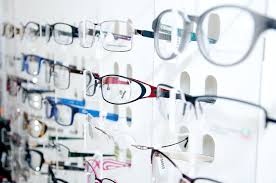When it comes to vision correction, individuals are often faced with deciding whether to use eye glasses or contact lenses. Both options serve the same fundamental purpose of correcting refractive errors, yet each offers distinct advantages, limitations, and lifestyles they cater to. Making this decision involves evaluating not only practical application but also personal preferences and routines.
Looking at Eye Glasses
Eye glasses are one of the most recognizable and commonly used forms of vision correction. They are straightforward in design, consisting of a frame that holds corrective lenses over the eyes. Glasses correct vision by refracting light as it enters the eyes, focusing it more precisely on the retina at the back of the eye. Glasses typically accommodate different vision-related needs. These can include single vision lenses for nearsightedness or farsightedness. Bifocal or progressive lenses, and lenses specifically designed for astigmatism are also an option.
Some of the strengths of glasses include the following:
- Ease of Use: They do not require direct contact with the eye.
- Durability: Eye glasses generally last longer than contact lenses before needing replacement.
- Eye Protection: Lenses can shield eyes from environmental irritants like dust, wind, and UV rays if equipped with appropriate coatings.
- Low Maintenance Requirements: Glasses may only need periodic cleaning and occasional frame adjustments.
Examining Contact Lenses
Contact lenses are an alternative designed for individuals seeking a more unobtrusive correction method. These small, curved lenses are placed directly on the tear film covering the surface of the eyes. Like eye glasses, contact lenses also work by refracting light, but they achieve this much closer to the eye’s surface. They are available in a range of designs, including daily disposables or weekly options that need to be cleaned.
Several factors make contact lenses appealing:
- Unobstructed Vision: Unlike glasses, contact lenses sit directly on the eyes, offering a natural field of vision without frames or edges.
- Versatility in Activities: Useful for sports and activities as they stay in place regardless of movement.
- Cosmetic Value: Contact lenses are typically invisible, making them suitable for individuals seeking a natural look.
Contrasting the Two
To make an informed choice between eye glasses and contact lenses, it helps to weigh the distinctions between them. These can be based on lifestyle, preferences, and specific needs. Glasses demand minimal upkeep beyond occasional lens cleaning and frame adjustments. Contact lenses require more detailed care routines, such as daily cleaning and replacement schedules, to maintain hygiene and eye health. Contact lenses provide unobstructed, natural vision and are virtually invisible on wearers.
Active individuals or athletes may find contact lenses more suited for their needs, as they do not interfere with physical movements or safety equipment like helmets or goggles. Eye glasses may be preferred for regular day-to-day routines owing to their convenience and ease of use. Both options deliver effective vision correction, but their comfort levels during prolonged use can vary. Glasses can cause pressure on the bridge of the nose or ears, while contact lenses may lead to dryness or irritation if not used properly.
Conferring With an Ophthalmologist
Once you have a clear sense of your preferences and lifestyle requirements, the next step is consulting with an ophthalmologist or optometrist. These professionals can assess specific vision needs and provide personalized guidance, whether this involves prescribing the right lenses or offering trial options for contacts. Choosing between eye glasses and contact lenses is a highly individual decision shaped by comfort, convenience, and lifestyle. Exploring both options and seeking informed advice will help you adopt the vision correction method that best complements your daily life.
- FREHF – The Revolutionary Future Of Human-Centered Technology!
- Adsy.Pw/Hb3 – Boost Your SEO And Drive More Traffic!
- Fitness Based Vacations By Timeshealthmage.com!
- TimesHealthMag Tips For Improving Sleep Quality – Expert Advice For Better Rest!
- How TimesHealthMage Helps Improve Your Lifestyle Habits!


Leave a Reply